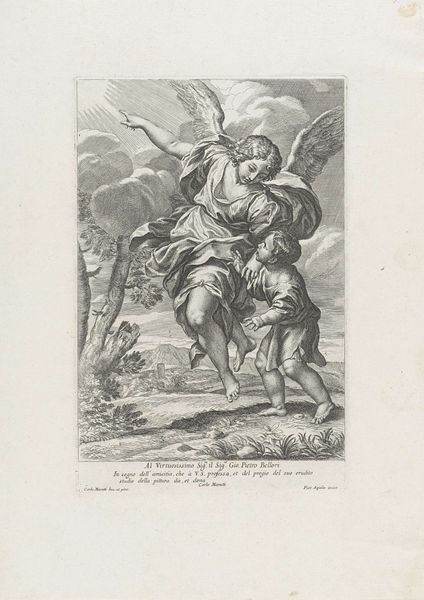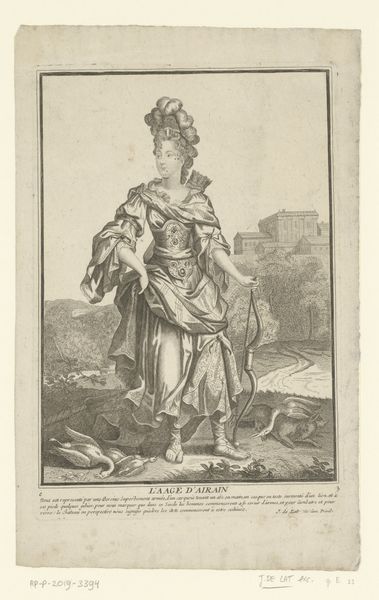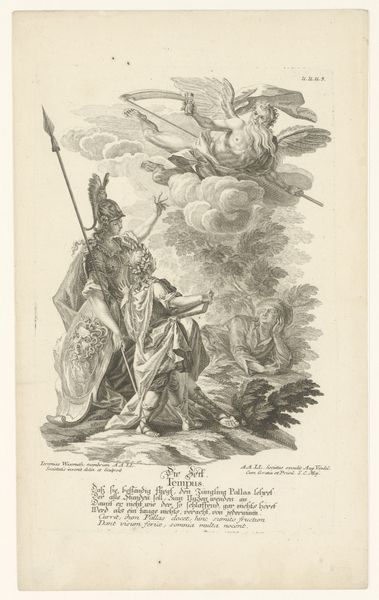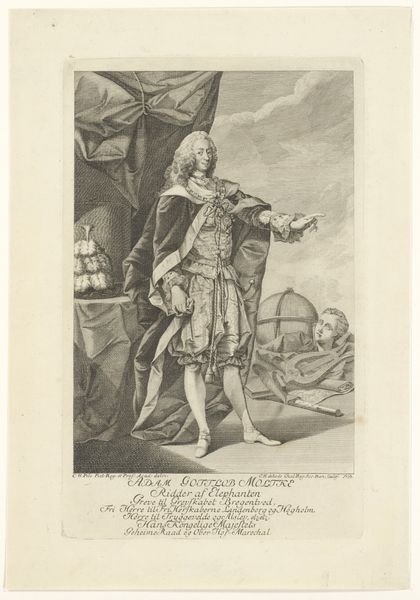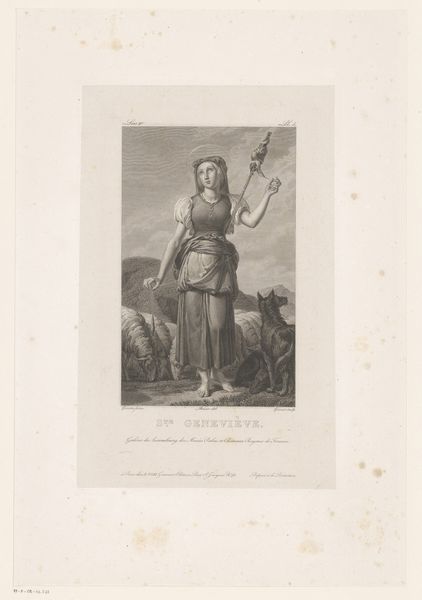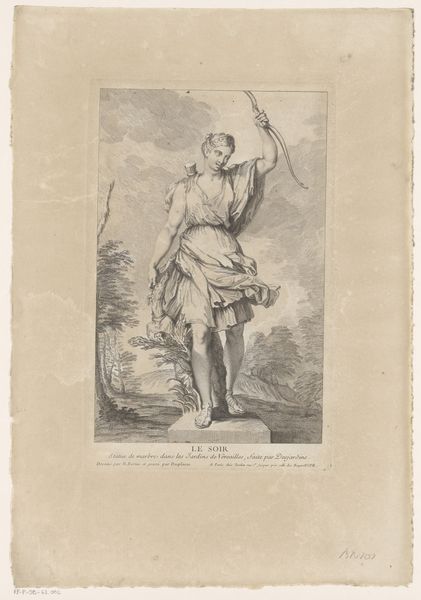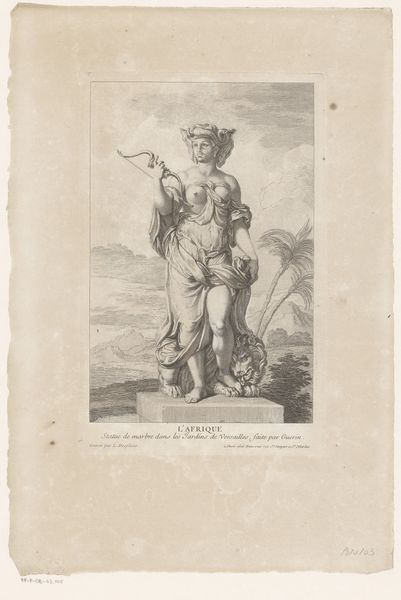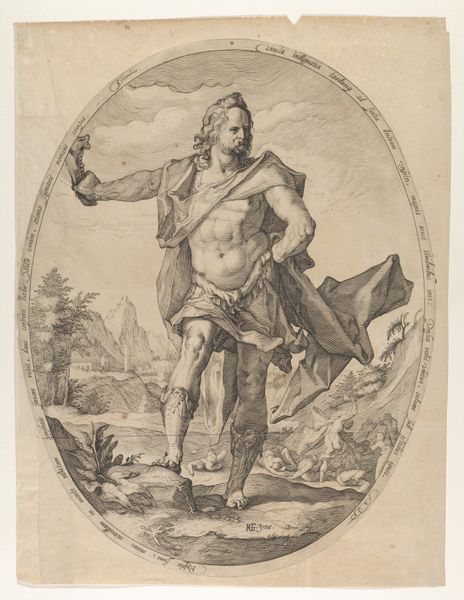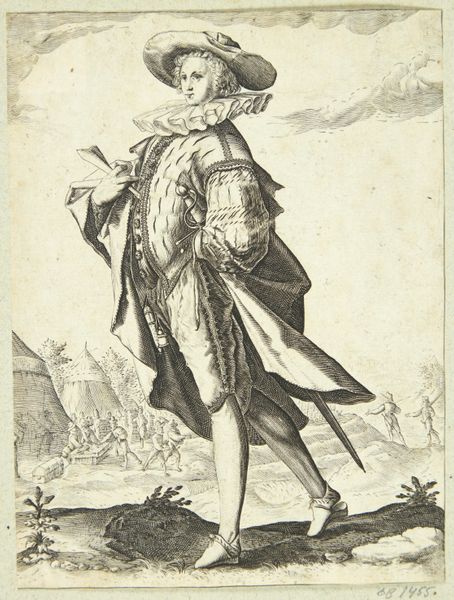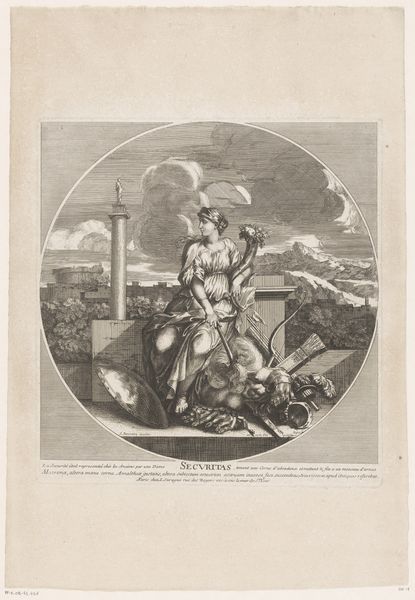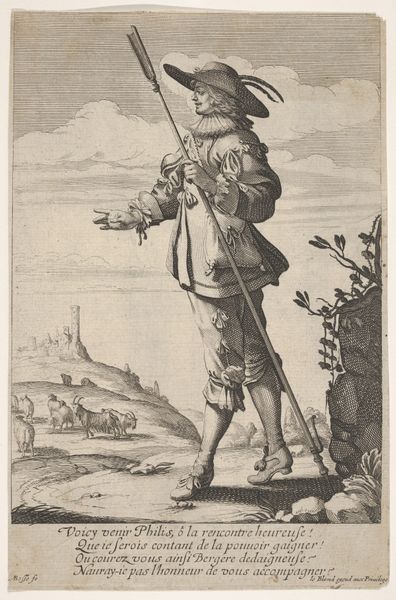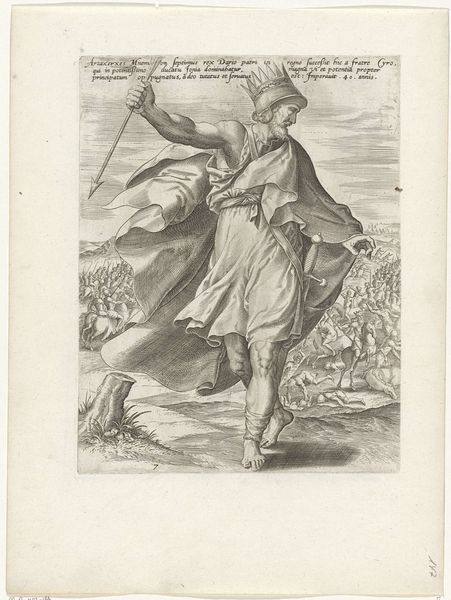
Dimensions: height 277 mm, width 206 mm
Copyright: Rijks Museum: Open Domain
Editor: Here we have "Portret van Lekain in de rol van Dzjengis Khan," an engraving from 1765 by Pierre Charles Lévesque. It's striking how this historical figure is portrayed with such theatrical flair. What stands out to you, looking at the work as a whole? Curator: Immediately, I'm drawn to the figure of Lekain himself, not just as a portrait but as a vessel for cultural memory. Notice how the accoutrements of "Genghis Khan" – the feathered headdress, the fur, the bow – are less about historical accuracy and more about invoking a sense of the "exotic" Other. This image operates within a very specific symbolic language of the 18th century. Do you see any tension in how East meets West in this rendering? Editor: Well, his face seems very European, despite the costume. It feels like the artist is imposing a European identity onto the character of Genghis Khan. Curator: Precisely! The engraving becomes a stage where ideas about power, performance, and cultural identity intersect. What do the shadows and figures in the background suggest to you? Do they amplify Lekain's presence or somehow diminish it? Editor: They feel very subordinate, like extensions of his power. This reinforces the idea of Khan as this dominant figure, but seen through a very Western lens. Curator: And in that Western lens, we find a complex layering of meanings. It reminds us that images, especially historical ones, are never neutral. They actively shape our understanding and perpetuate certain narratives. It makes me think about how much our ideas are inherited and performed. Editor: That’s fascinating. I initially saw it as a portrait of an actor, but now I realize it’s a commentary on cultural perception and power, too. Curator: Indeed, art can be an intriguing site for cultural archeology.
Comments
No comments
Be the first to comment and join the conversation on the ultimate creative platform.
